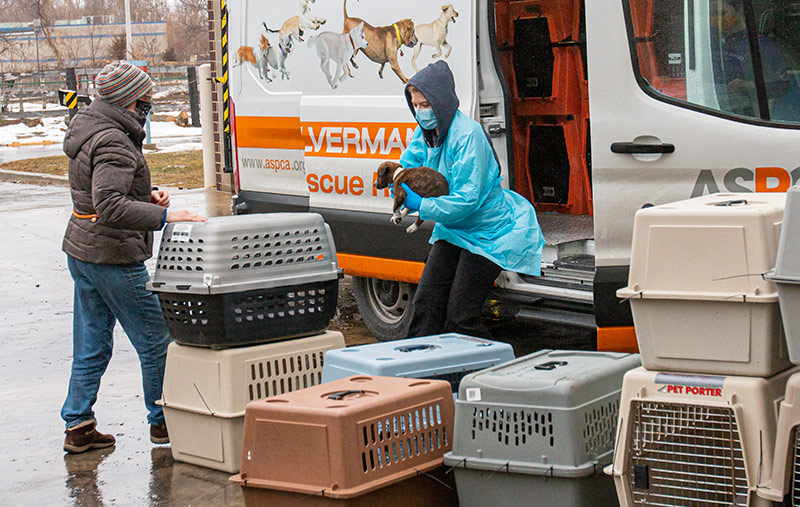Across the nation, overcrowded animal shelters face a dire predicament—limited resources juxtaposed with an overwhelming influx of stray and abandoned dogs. Picture this: a shelter bustling with barks and whimpers, each sound echoing the heart-wrenching plight of countless canines yearning for attention and sustenance. But how can you make a tangible difference in the lives of these dogs? How can you help feed them and alleviate this troubling situation? This article examines actionable steps that not only foster immediate relief but also work towards a more sustainable solution for our four-legged friends.
First, it’s essential to recognize the enormity of the challenge. Animal shelters typically operate on stringent budgets, and the cost of feeding numerous dogs can quickly escalate. The financial pressure often results in insufficient nutrition for these animals, leading to malnourishment and health issues. With so many dogs relying on these shelters, imagine the impact if each community member contributed even a small amount to help feed these animals. The question arises: are you willing to transform that compassionate thought into effective action?
One of the most straightforward ways to assist shelters is by organizing a food drive. Mobilizing your community around a cause can amplify your efforts significantly. Start by reaching out to local businesses and schools. You might pose a playful question like, “How many dog food bags can we collect in a month?” This not only instills a sense of challenge but also engages people’s competitive spirits. You could designate collection points at these locations and create visually appealing flyers that emphasize the urgency of the situation.
Moreover, consider reaching out to your social media networks. In this digital age, a single post can garner attention far and wide. Share information regarding the shelter’s needs, the types of food required, and even updates on the dogs currently in need. Highlighting the statistics—for instance, how many dogs could be fed with the collection effort—can create an emotional connection that inspires action. The importance of transparency cannot be overstated here; people are often more willing to contribute when they understand where their donations will have an impact.
Alternatively, direct fundraising initiatives can bolster food supplies. Engaging in activities such as bake sales, car washes, or trivia nights can yield significant revenue. Every dollar raised can help alleviate the critical hunger facing shelter dogs. You could go as far as to launch a crowdfunding campaign, tapping into the potential of online platforms. Creating a compelling narrative around the cause, emphasizing the urgency and real-time consequences of every donation, will attract more backers.
Another powerful way to ensure the well-being of shelter dogs is to partner with local pet food companies or supermarkets. Approach them for donations or discounts specifically for shelters. Many businesses have programs designed to support local communities or animal shelters, and a well-prepared proposal can easily foster a beneficial partnership. This initiative not only aids in feeding dogs but also builds relationships that can continue to sustain shelters long-term.
The advantages of engaging in community involvement extend beyond the immediate benefits to the dogs. Such initiatives inspire empathy and responsibility within your community regarding animal welfare. Each person who contributes can feel a sense of accomplishment, knowing they positively impacted the lives of these dogs. After all, it’s not merely about feeding them; it’s about ensuring they receive love, care, and the opportunity for a better existence.
Furthermore, volunteering your time at shelters can complement food donation efforts. Active participation allows you to understand the workings of the shelter and pinpoint other areas where assistance is needed. Should your schedule permit, consider fostering dogs temporarily. This way, you provide a safe environment and nourishment while freeing up valuable resources for the shelter. Each of these efforts synergistically contributes towards a collective mission of building a better life for the vulnerable dogs awaiting adoption.
It’s pivotal also to consider the aftermath of the feeding initiatives. What happens after the dogs receive proper nourishment? How can these efforts lead towards longer-term solutions? One must analyze the significance of maintaining ongoing support for shelters. Feeding dogs is an immediate need, but nurturing a culture of compassion and responsibility can yield substantial impact over time. Engaging in advocacy for spaying and neutering services can directly confront the root cause of overcrowding issues in shelters.
Education plays a vital role in this advocacy. Equip yourself and your community with knowledge about responsible pet ownership. Host informational sessions or workshops aimed not only at potential pet owners but also at current ones, emphasizing the importance of spaying and neutering. This proactive approach addresses the continuous cycle of overpopulation, thereby alleviating future pressures on shelters.
The plight of dogs in overcrowded shelters often resonates deeply with those who encounter it. Yet action speaks volumes louder than words. Without proactive measures to contribute to feeding efforts and alleviating overcrowding, these dogs remain ensnared in a cycle of neglect. By turning empathy into action, you not only help satisfy their immediate hunger but also contribute to creating a future where every dog knows the warmth of a loving home. The ultimate question remains: will you step up to the challenge and become an integral part of this transformative journey for dogs in need?






